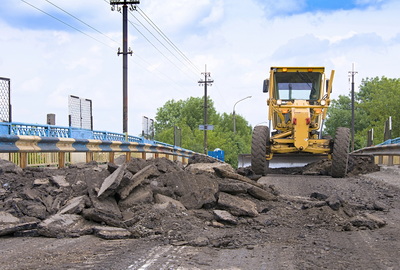Autumn Road Inspections as a Maturity Test for Infrastructure: What the Commissioning Means and What to Expect This Winter
October 10, 2025.

Ukraine’s road authorities have launched the autumn commission-based inspection of national highways. At first glance, it looks like another round of checking pavement and signs. In reality, it is the most important stage of winter readiness: taking an X-ray of the network, pinpointing bottlenecks, and eliminating risks before the first sub-zero temperatures. This is standard practice across mature European road agencies, where no one enters winter without assessment cycles and clear checklists.
European context: not just an inspection, but a safety procedure
In European practice, road inspections are part of road-infrastructure safety management. The goal is not only to measure potholes but to evaluate systemic risks: edge of carriageway, shoulders, sight lines, crash hot spots, service objects within the right of way, intersections and rail crossings. The end product is a risk map with priorities and quick wins that can be delivered before the season.
Why an “autumn technical check” matters now
The announced checks cover pavement, shoulders and right-of-way; the operation of lighting and video monitoring; high-risk sections; rail crossings; weigh-in-motion and static weighing sites; and advertising structures within the right-of-way. This reflects modern safety logic: a road is not only asphalt but a managed environment for the driver. In mature systems, winter readiness includes severe-weather plans, 24/7 fleet deployment and proactive driver communications; the objective is to maintain passability as far as possible, not when time allows.
What to check—and why
Pavement and shoulders. In winter, small defects quickly become dangerous potholes; edges and drainage are critical.
Lighting and video monitoring. Short days and the low winter sun make visibility and rapid feedback from the road as important as snow-removal equipment.
Crash hot spots and rail crossings. After a network-level assessment, “red” segments should receive either detailed inspections or direct remedial action—extra signage, high-friction surfacing, local lighting, remarking. Autumn is the last window before ice sets in.
Weight control. Overloading is the enemy of winter pavement. If weight-control sites fail, heavy axles will destroy the surface during thaws despite any snowplowing.
Service objects and roadside advertising. Poorly located structures create turbulence, block sight lines and distract drivers. An autumn audit is the best time to fix these risks.
How to measure results: lessons from Europe
Best practice calls for infrastructure KPIs: network safety indices should reflect road quality regardless of driver behavior or vehicle technology. For Ukraine, inspections must not become box-ticking; they should measurably and transparently reduce risk.
What Ukraine can add to make the “autumn inspection” a European routine
Public risk dashboards. Show where defects were found, their priority and deadlines for remedy—this curbs formalism and raises accountability.
Regional winter plans. Stock norms for salt, gritting routes, criteria for grit-box placement, and responsible contacts—winter maintenance as a predictable service with KPIs.
Rapid interventions on red segments. Extra signage, high-friction patches, local lighting, remarking—cheap and effective until major works occur.
Communication with communities and businesses. On local roads, part of winter service lies with owners and municipalities; rules should be explained and codified.
Conclusion
Autumn commission inspections are not a pre-snow campaign but a risk-management instrument aligned with European standards. When inspections become a list of actions with deadlines, winter can be navigated without unpleasant surprises: fewer crashes, fewer gridlocks, fewer frayed nerves. Where the road authority measures, plans and communicates, the cold season turns into a managed service rather than an act of nature. Ukraine is moving in that direction. The next step is greater transparency, risk-oriented KPIs and public winter plans—the real test of the maturity of our infrastructure.
|




